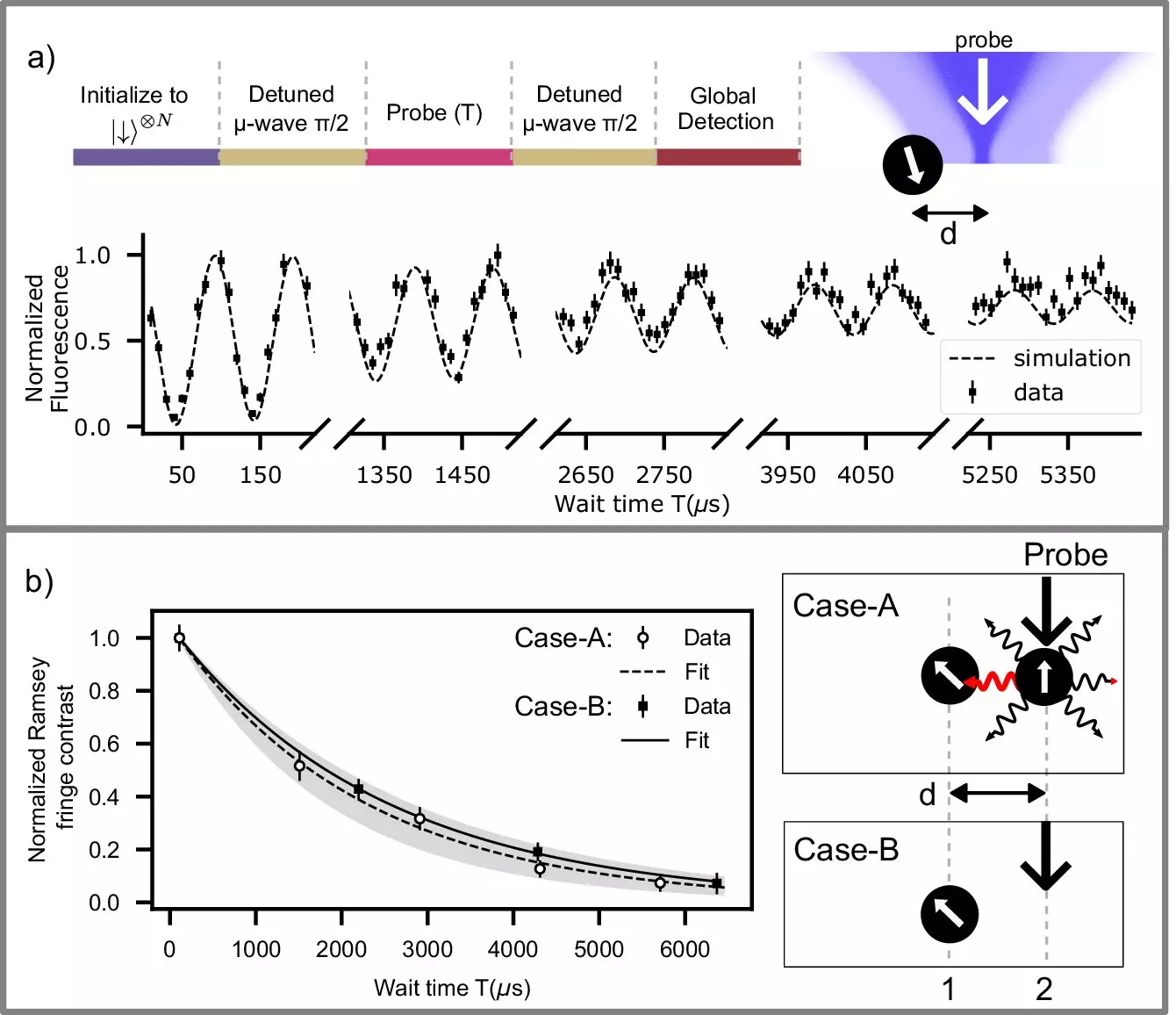Quantum computing stands at the frontier of technological advancement, promising opportunities to perform computations far beyond the grasp of classical systems. Integral to this progress is the preservation and manipulation of qubits—quantum bits that represent the foundational units of quantum information. Researchers, however, face significant hurdles in maintaining qubit integrity due to environmental disturbances and accidental measurements. The quest for stable qubit operations has now taken a significant stride forward, thanks to groundbreaking research conducted by a team at the University of Waterloo.
In the world of quantum computing, qubits are notoriously delicate. Their states can easily be altered or destroyed through unintended interactions, which complicates their practical use in quantum processes like computation and error correction. The challenge lies not only in measurement but in ensuring that the quantum information stored in one qubit remains uninterrupted when operations occur on adjacent qubits. Previous methodologies to mitigate these accidental measurements often resulted in wasted coherence time or entailed the use of additional qubits, introducing complexity into quantum systems.
The recent research, led by Rajibul Islam, a physicist at the Institute for Quantum Computing, presents an elegant solution to this quandary. By harnessing precise laser control, their team successfully measured and reset a trapped ion qubit to a defined state without disrupting neighboring qubits that are merely micrometers apart. This proximity is significant; it is less than the width of a human hair, emphasizing the challenge they overcame. Their findings, advanced with the aid of students and postdoctoral fellows, are documented in the prestigious journal *Nature Communications*.
The crux of this achievement lies in a culmination of prior research, notably leveraging programmable holographic technologies. In earlier studies, the team had demonstrated the capability to target single qubits for destruction while maintaining the integrity of others, but this recent work takes things a step further. By employing a combination of holographic manipulation with an ion trap, the researchers demonstrated that it is practical to reset and manipulate a specific qubit without the collateral damage typically associated with the process.
A central technical barrier in quantum operations is mitigating crosstalk, where interactions or measurements of one qubit inadvertently affect those nearby. In this endeavor, the team skillfully directs laser beams tuned to specific atomic transitions, isolating the qubit in question. Despite achieving more than 99.9% fidelity in safeguarding one qubit while manipulating another, they acknowledge that the inherent risks associated with scattered photons—inevitable emissions arising from laser interaction—could still threaten nearby qubits.
By utilizing the most precise mechanisms for light control, the researchers managed to minimize these risks. They confirmed that with optimized light suppression and meticulous laser tuning, the quantum states of adjacent qubits could remain stable throughout the measurement process. The ability to achieve high fidelity without needing to physically separate qubits was previously thought to be an impossible challenge, often deemed an impractical endeavor within the scientific community.
The implications of this breakthrough extend beyond theoretical inquiry, hinting at substantial advancements in practical quantum computing applications. The researchers believe their method could enhance the performance of quantum processors, making them swifter and more efficient. Also, this development paves the way for more sophisticated error correction protocols, which are essential for realizing the full potential of quantum technologies.
In identifying new strategies, such as dynamic repositioning of important qubits or utilizing specific quantum states resistant to measurement disturbances, the team’s findings are sure to inspire future explorations in quantum error correction. This research is not just a technical footnote but a critical stepping stone toward more robust quantum systems.
The achievements of the University of Waterloo’s research group mark a significant evolution in the field of quantum information science. Their innovative approach to stabilizing qubits amid manipulation provides not only a solution to an ongoing challenge but also a reference point for redefining the boundaries of what can be accomplished in quantum computing. The ongoing transformation in how qubits are measured and preserved signals a promising future for quantum technology, one that may soon lead to practical applications capable of reshaping industries and solving complex problems previously deemed insurmountable. This work challenges prevailing notions about quantum fragility and stands as a testament to the relentless pursuit of knowledge in this cutting-edge area of study.

